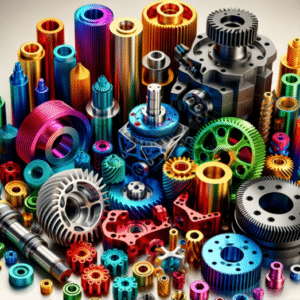CNC milling is a widely used technique in the manufacturing industry to shape and machine various materials, including stainless steel. Stainless steel, known for its exceptional strength, corrosion resistance, and aesthetic appeal, poses certain challenges during the CNC milling process. This article explores the techniques, considerations, and best practices for effectively CNC milling stainless steel to achieve excellent results.
Understanding the Properties of Stainless Steel
Before diving into the milling techniques, it is crucial to comprehend the properties of stainless steel. Stainless steel is an alloy composed mainly of iron, chromium, and other elements like nickel, molybdenum, and titanium. These elements contribute to its unique characteristics such as high hardness, high strength, and resistance to corrosion, making it suitable for a wide range of applications.
Key Considerations for CNC Milling Stainless Steel
CNC milling stainless steel requires careful planning and consideration of several factors to achieve successful outcomes:
- Tool Selection: Choosing the right cutting tools is paramount for milling stainless steel. High-speed steel (HSS) tools are suitable for general-purpose milling, while solid carbide tools are ideal for high-speed machining due to their excellent hardness, wear resistance, and ability to withstand high cutting temperatures. It is essential to select tools with sharp cutting edges and appropriate coatings (such as TiN, TiCN, or TiAlN) to optimize tool life and minimize tool wear.
- Cutting Parameters: Optimizing cutting parameters is critical to achieving efficient machining while maintaining quality. Cutting speed, feed rate, and depth of cut should be carefully determined based on the specific grade and hardness of the stainless steel being machined. Higher cutting speeds can be advantageous for reducing work hardening and achieving better surface finishes. However, cutting parameters should be balanced to prevent excessive tool wear and reduce heat generation.
- Cooling and Lubrication: Stainless steel has poor heat conductivity, making it prone to overheating during machining. Adequate cooling and lubrication are essential to dissipate heat and prolong tool life. Using coolants, such as oil-based or water-soluble fluids, can efficiently remove heat and lubricate the cutting zone. Flood cooling provides better heat dissipation compared to mist or air cooling, ensuring optimal machining conditions.
- Toolpath Optimization: Utilizing advanced computer-aided manufacturing (CAM) software allows for efficient toolpath optimization. This involves minimizing tool engagement time, optimizing feed rates, and reducing tool deflection. Employing trochoidal or high-efficiency milling techniques can also provide greater tool life and improve chip evacuation, enhancing overall machining efficiency.
- Workholding and Rigidity: Stainless steel is a sturdy material, requiring secure and rigid workholding. Using high-quality vises, clamps, or fixtures ensures stability during CNC milling, reducing vibration and chatter. Rigidity is of utmost importance to achieve precise and accurate cuts in stainless steel.
Machining Techniques for CNC Milling Stainless Steel
Several machining techniques can be employed to ensure successful CNC milling of stainless steel:
- Ramping: Ramping is an effective technique that minimizes the initial shock and stress on the cutting tool. By gradually entering the material from the side instead of plunging directly, ramping reduces the risk of tool breakage or chipping.
- Pecking: When machining deep pockets or holes, pecking involves periodically retracting the tool during the milling process to break up chips and prevent chip recutting. This technique enhances chip evacuation and aids in reducing heat generation.
- Trochoidal Milling: Trochoidal milling utilizes a circular toolpath with varying depths of cut. This technique helps increase tool life and reduce heat buildup during the machining of stainless steel. By reducing the tool’s radial engagement and providing smaller, controlled chip loads, trochoidal milling minimizes the risk of tool wear and overheating.
Post-Machining Analysis and Quality Control
Post-machining analysis and quality control are essential steps in CNC milling stainless steel. Inspecting and measuring the machined components for dimensional accuracy, surface finish, and any potential flaws or defects ensures the desired quality is achieved. Surface roughness measurement devices, such as profilometers, can be used to quantify the quality of the milled surface.
Conclusion
CNC milling stainless steel can be a challenging task, but with proper techniques, considerations, and best practices, excellent results can be achieved. Understanding the properties of stainless steel, selecting appropriate cutting tools, optimizing cutting parameters, employing efficient toolpaths, ensuring workholding rigidity, and utilizing specific machining techniques like ramping, pecking, and trochoidal milling are crucial for successful stainless steel milling. By implementing these strategies and following post-machining analysis and quality control procedures, China cnc milling service suppliers can produce superior-quality machined stainless steel components while achieving higher productivity and efficiency.







